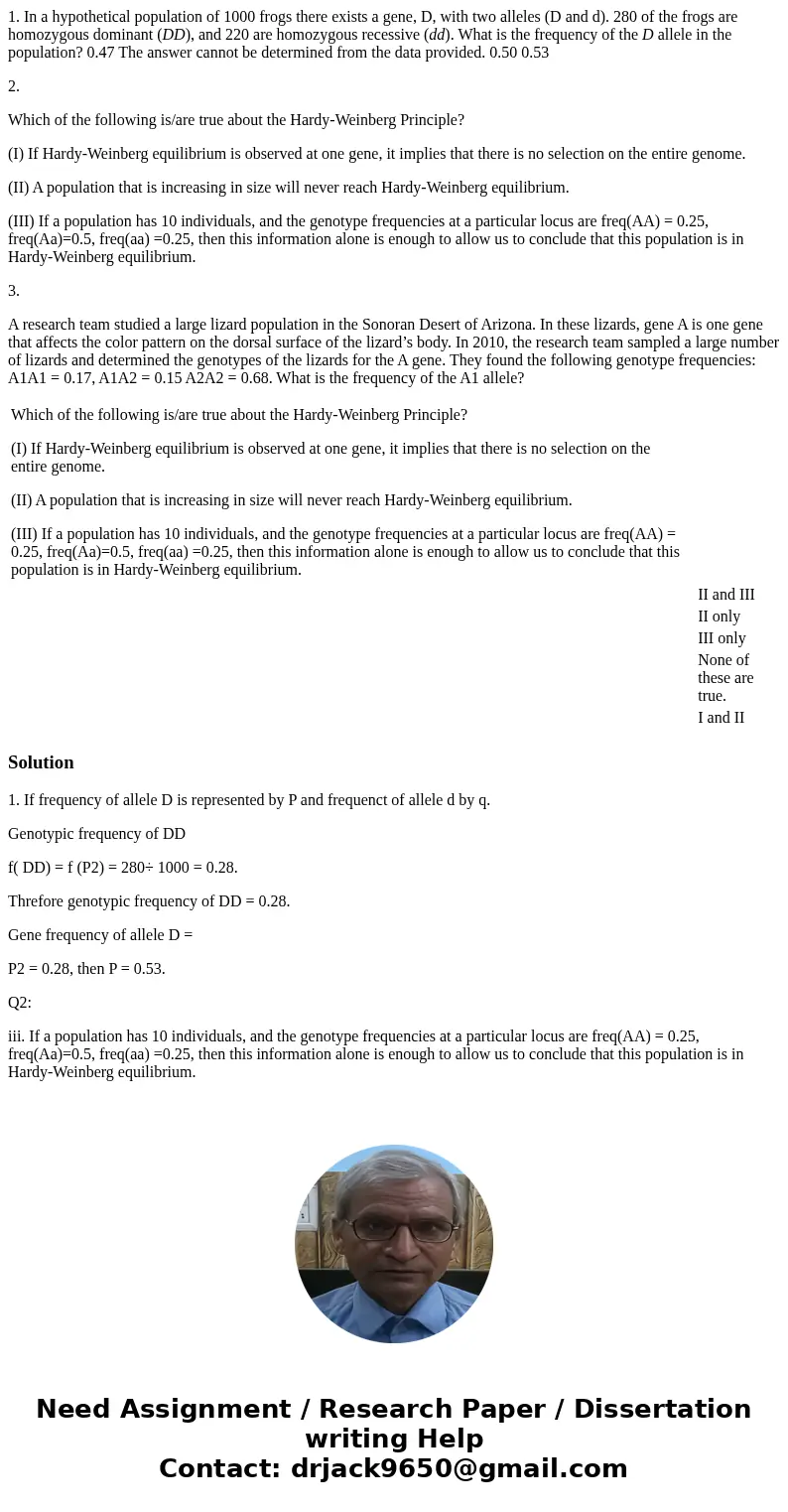1 In a hypothetical population of 1000 frogs there exists a
1. In a hypothetical population of 1000 frogs there exists a gene, D, with two alleles (D and d). 280 of the frogs are homozygous dominant (DD), and 220 are homozygous recessive (dd). What is the frequency of the D allele in the population? 0.47 The answer cannot be determined from the data provided. 0.50 0.53
2.
Which of the following is/are true about the Hardy-Weinberg Principle?
(I) If Hardy-Weinberg equilibrium is observed at one gene, it implies that there is no selection on the entire genome.
(II) A population that is increasing in size will never reach Hardy-Weinberg equilibrium.
(III) If a population has 10 individuals, and the genotype frequencies at a particular locus are freq(AA) = 0.25, freq(Aa)=0.5, freq(aa) =0.25, then this information alone is enough to allow us to conclude that this population is in Hardy-Weinberg equilibrium.
3.
A research team studied a large lizard population in the Sonoran Desert of Arizona. In these lizards, gene A is one gene that affects the color pattern on the dorsal surface of the lizard’s body. In 2010, the research team sampled a large number of lizards and determined the genotypes of the lizards for the A gene. They found the following genotype frequencies: A1A1 = 0.17, A1A2 = 0.15 A2A2 = 0.68. What is the frequency of the A1 allele?
| Which of the following is/are true about the Hardy-Weinberg Principle? (I) If Hardy-Weinberg equilibrium is observed at one gene, it implies that there is no selection on the entire genome. (II) A population that is increasing in size will never reach Hardy-Weinberg equilibrium. (III) If a population has 10 individuals, and the genotype frequencies at a particular locus are freq(AA) = 0.25, freq(Aa)=0.5, freq(aa) =0.25, then this information alone is enough to allow us to conclude that this population is in Hardy-Weinberg equilibrium. | |||||||||||
|
Solution
1. If frequency of allele D is represented by P and frequenct of allele d by q.
Genotypic frequency of DD
f( DD) = f (P2) = 280÷ 1000 = 0.28.
Threfore genotypic frequency of DD = 0.28.
Gene frequency of allele D =
P2 = 0.28, then P = 0.53.
Q2:
iii. If a population has 10 individuals, and the genotype frequencies at a particular locus are freq(AA) = 0.25, freq(Aa)=0.5, freq(aa) =0.25, then this information alone is enough to allow us to conclude that this population is in Hardy-Weinberg equilibrium.

 Homework Sourse
Homework Sourse